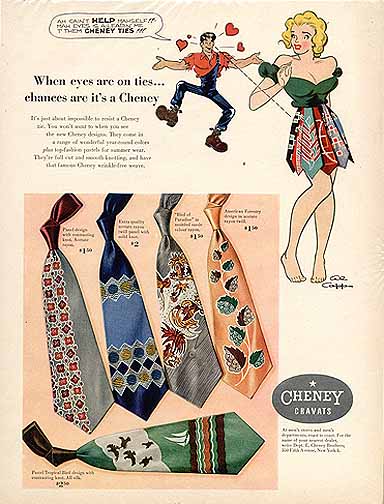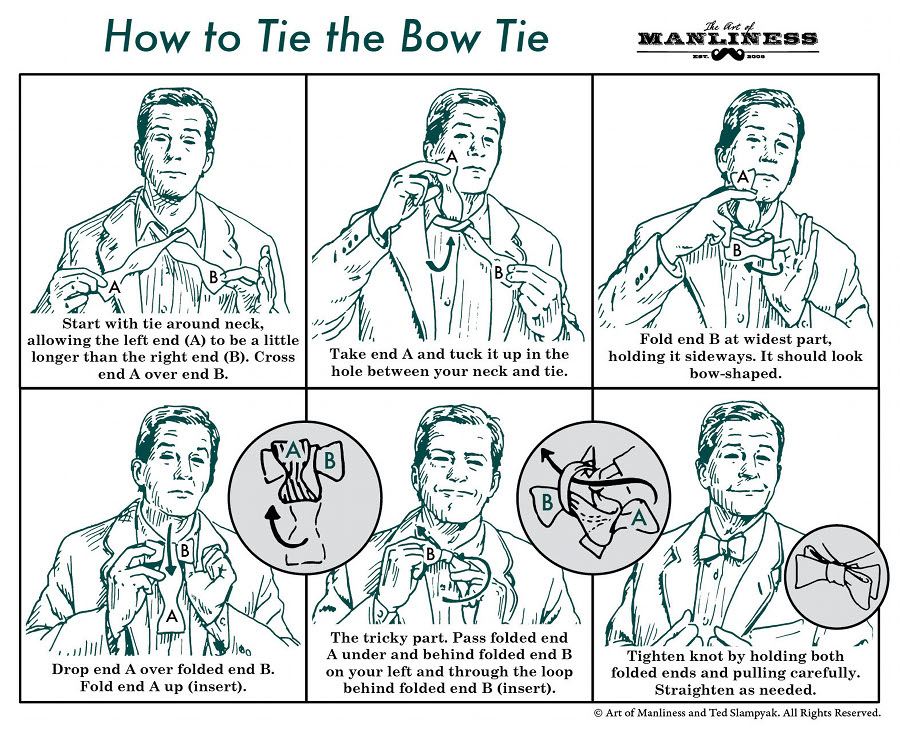One of things that I’m most drawn to about clothes is their texture, their tactile qualities, and this is especially true of ties. I like picking a tie up from the display table in a department store and feeling it. I started this habit way back when I was a teenager and began wearing ties to church. When I’d hold a tie in my hand, I’d intuitively feel for its quality. I never quite knew what it was I was feeling for that allowed me to deduce that a certain tie was high quality or garbage. It was just a tacit, embodied kind of knowledge that I’d developed over the years, and which consistently steered me right.
But I recently decided it was time I take this implicit knowledge of how to quickly recognize a quality tie and make it explicit. To learn how to get an even more accurate read on the qualities that distinguish high-caliber neckwear from its inferior lookalikes. Below I share seven things to check for in a tie when you pick one up and heft it:

1. A “Hand” With Texture and Weight
There’s actually a term in the clothing world that describes the feeling of the fabric that’s used on the outside of a tie (also known as the “envelope”): hand. When you pick up a tie, check its hand, feeling for its texture and weight. Quality ties feel hefty and the fabric — even on the finest silk ties — has a coarse texture thanks to its large weave. Heftier ties will be able to withstand the torture of being knotted over and over again. They bounce back faster and last longer.
While heft and texture are usually signs of good craftsmanship, don’t automatically dismiss a tie if it lacks these qualities. Cotton and linen ties are lightweight, but in the right style context can be a perfectly appropriate choice.
2. Bias Cut in the Envelope’s Fabric
Envelope fabric is said to be cut on the bias if it’s cut at a 45-degree angle to its warp and weft. If your tie fabric isn’t cut at this angle, then it will twist on itself while you’re wearing it.
There are a couple ways to test the fabric of a tie to see if it was cut on the bias:
The stretch test: First, stretch the tie length-wise. It should stretch. Second, stretch the fabric at a 45-degree angle. It should NOT stretch. If your tie passes these two stretch tests, the fabric was cut on the bias.
The hang test: Simply drape the tie over your hand. If the fabric was cut on the bias, the tie shouldn’t twist as it’s hanging.
3. Tip Is Same Material as Envelope
Ties can either be tipped or untipped. Tipping is the piece of fabric that backs the triangular point of the tie’s main lower section or “blade.” Lower quality ties use a piece of polyester fabric instead of silk for the tipping, so look for tipping that’s made from the same material as the tie’s envelope.
Untipped ties aren’t a sign of lower quality. Your tie will just lack some heft at the bottom compared to a tipped tie. Some describe untipped neckwear as airy, and it’s an appropriate choice for spring and summer suiting.
4. Complementary Lining
The lining is a piece of coarser, thicker fabric (usually wool) that tie makers use to give a tie structure and durability. It also helps a tie maintain its shape and gives you a handsome, full-looking tie knot.
The lining of a tie should complement the tie’s envelope fabric: If a tie is using a hefty, textured fabric for its envelope, then the lining should be lightweight; if the tie uses a lighter weight envelope fabric, the lining should be heftier.
Also, check to see if the lining runs all through the necktie. If it doesn’t, you’re going to have a limp tie that doesn’t last as long.
Checking the lining is possible if a tie is untipped; if it’s tipped, you’ll want to ask the merchant for details about the lining.
5. Rolled Edge
Check the edges of your tie. They should have a “rolled edge” with a slight curve that gives the tie more fullness. The edges of the tie shouldn’t look flat and crisp. Round is what we want.
6. Hidden Slip-Stitch
The slip-stitch is a thread that’s stitched along the entire length of the tie, which keeps its two sides together and helps it maintain its shape.The slip-stitch on quality ties will be hidden, while on lower quality ties, it will show.
7. Two Bar Tacks
Bar tack is a piece of thread stitched across the main seam of a tie which reinforces the slip-stitch. Your tie should have two bar tacks. One near the big point of the blade, and the other near the smaller point of the “tail.”
Read more on ties:







